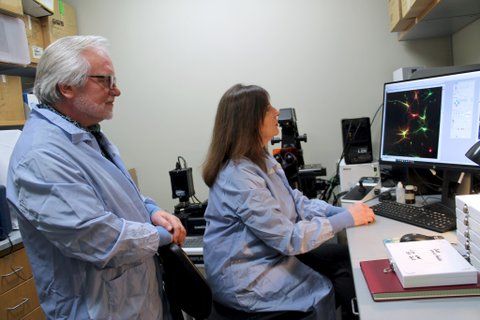By Tom Still
MADISON – When the news broke about Minnesota and Wisconsin sharing first-place rankings in this year’s ACT college entrance exam scores, one reporter asked a question that was simultaneously amusing and serious: “Could Vikings fans really be this smart?”
As annoying at this may be to Wisconsin natives who were raised to believe little good ever comes out of Minnesota, the evidence suggests the answer is “yes.”
In fact, it’s a resounding “yes” considering the strong corps of college graduates in Minnesota’s workforce.
Wisconsin and Minnesota are similar states in culture, weather and population. But Minnesota’s population of 5 million includes a far larger percentage of college-educated adults than Wisconsin, which has about 5.3 million people.
Nearly a third (32.7 percent) of Minnesota adults, age 25 and older, hold four-year college degrees. That compares to the national average of 27.2 percent and Wisconsin’s mark of 24.1 percent, according to figures compiled by NorthStar Economics for the Wisconsin Technology Council. Fifteen years ago, the percentage of college graduates in Minnesota was fairly comparable.
With that “degree gap” in mind, consider Minnesota and Wisconsin per capita incomes. Wisconsin’s per capita income in 2003 stood at $30,898, which was 98 percent of the U.S. average of $31,632 and good for 20th among the 50 states. Minnesota’s per capita income was $34,443, or 109 percent of the U.S. average and 8th among the states. The gap between Minnesota and Wisconsin was $3,545, according to the U.S. Commerce Department’s Bureau of Economic Analysis. In 1969, the two states were neck-and-neck.
The connection between education levels and income is virtually indisputable, economists agree.
“The most extensively documented featured of embodied human capital is the relationship between education and wages,” reported the National Bureau of Economic Research in Cambridge, Mass., in May 2003. “Studies of earnings in advanced capitalist economies typically find that each extra year of schooling raises earnings by 5 to 10 percent.”
Why is the degree gap between Minnesota and Wisconsin so large? It’s not because Wisconsin lacks institutions of higher education. The state has 13 public four-year university campuses, 13 two-year campuses, 21 private colleges and universities, and a technical college system that graduates people who often go on to pursue four-year degrees. The answer revolves around a term – “brain drain” – that is often used but poorly understood.
In January 2003, the Federal Reserve Bank of Minneapolis reported on the “brain drain” phenomenon in its five district states, including Wisconsin and Minnesota.
For fiscal years 1998-2000, 82 percent (64,000) of some 78,000 graduates from the Minnesota System of Colleges and Universities were either working or continuing school in Minnesota. For two-year colleges, 85 percent stayed in state; for four-year state universities, it was 76 percent.
The Fed noted that the University of Minnesota tracked the migration of 190,000 graduates (at all degree levels) from the classes of 1981 to 2002. It found that 76 percent of those who graduated with a baccalaureate degree in the last five years remained in state, and 72 percent of the entire 22-year cohort still lived in Minnesota.
According to the research office of the University of Wisconsin System, about two-thirds of all graduates from the system’s four-year programs remain in state. However, the rate fluctuates widely depending on where graduates came from. Four of five Wisconsin natives stayed in state after graduation, compared with just 12 percent of graduates from Minnesota and 18 percent of graduates from other states.
Other studies have shown that Wisconsin does roughly as well as its neighbors in retaining home-grown college graduates, but a relatively poor job attracting graduates from other states. The reasons generally involve salary levels – Wisconsin has two high-wage neighbors in Chicago and the Twin Cities – and a perceived lack of career and cultural opportunities. “Perceived” is the key word, because many Wisconsin employers report that once they attract a young worker from outside the state, he or she rarely wants to leave.
Vikings fans or no, Minnesota is ahead in the “brain gain” game. To compete in the knowledge-based economy of the 21st century, Wisconsin must catch up. It must produce more – and attract more – skilled workers who will create tomorrow’s businesses and jobs. Leading the nation in ACT scores is great, but those bright young people need more reasons to stay home.
Still is president of the Wisconsin Technology Council. He is the former associate editor of the Wisconsin State Journal in Madison.


